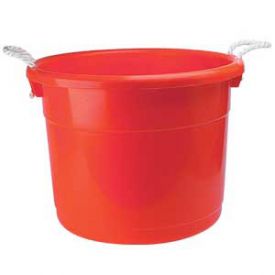Burgs
Well-Known Member
So what would be the advantage of mashing in a smaller 5 gal as opposed to the 8 gal?


Here are the materials I used:
-2lbs Munich German Malt
-3lbs Bestmalz German Wheat Malt
-.25lbs Briess U.S. Chocolate Malt
-3lbs Plain Wheat DME
-.75oz Tettnanger pellet hops
-Wyeast Bavarian 3056 (I wanted to go with something a bit more nuteral then the hefeweizen)
You might have some problems with conversion of the partial mash. With such a high percentage of Munich, you might want a little base malt in there. Half of a pound of 6 row, or even 2 row would help that out.
I disagree. The wheat malt alone is more than enough to convert everything, even if the munich didn't have enough diastatic power to convert itself, which it does.
I often do Munich/Wheat dunkelweizens and have even done some Munich SMaSH beers.
Do you know what the temperature of your mash was when you filled it to the brim? That might be your only issue...you want to fall within the 148-154°F range. It doesn't sound like you went under (or you might not get conversion), but if you went over, you may get some tannin flavor. PM is more forgiving than all-grain, tho, so no matter what you're probably fine.
Sounds like it went well.

"White wheat malt is the only one to have enough diastatic power to completely convert itself (130%). German wheat malt is really close at 95%, dark wheat is 10%, and Belgian wheat malt is 74% for the set of malt analyses that I looked at. It is suggested to "Use with a highly modified malt to insure diastatic enzymes. (http://www.foamrangers.com/malts.html)" though the same people list that common German Weizens are up to 70% wheat malt. Hope that helps.
Look at the malt analysis of the wheat malt you plan to use. If it is 100% or more it should convert itself in theory, though most things I see when I search around suggest using at least some base malt in the mash with high enzymatic power."
my LHBS only has red wheat (most common form). The suggested a little 6 row, but I did have 1lb of flakes and a little caramunich that needed help
A malt with enough power to self-convert has a diastatic power near 35 °Lintner (94 °WK); the most active, so-called "hottest" malts currently available, American six-row pale barley malts, have a diastatic power of up to 160 °Lintner (544 °WK).
I guess what it comes down to is that the Foampage doesn't know what the hell they are talking about.
If that person is using Briess wheat malt, they will surely have not problem, but in most cases, is unknown. If DB hadn't had proper conversion, he would know it, so you most likely are OK, but don't forget, these values are the best case scenario. If you are mashing in with your temps all over the place, you might damage the amalyse enzymes, and not get the full conversion power of everything.
Hey DB what do you think now that I provided a bit more info about brew day in my last few above posts, think my brew should be ok w/o too many tannins?
It varies and I've used many different bags. For how they will work: The finer bags will let less grain through, but they will flow slower and allow less water through, which could hurt efficiency and make the sparge difficult. The more coarse bags will work much easier, but allow more grain and husk particles through to the boil.

A water bath works great. Just use one of those tubs for kegs:

Thanks for the quick response. I was thinking after I posted about a full size mash/lauter tun and the grains resting in the bottom or on the false bottom...sorry I should have thought about it more before asking the question. One more question, when using the strike water calculator, I am assuming the temp of grain setting is room temp of the grain? Or do you just leave it at 60 regardless? Thanks again!
They can rest at the bottom of the pan, because you should never apply heat once your grains are in the pot. You only heat the water and eventually the wort.
Thanks Deathrbrewer for this pictorial and explanation. I just brewed my beer using this method, a Belgian Blonde, and kegged it yesterday. It was my second batch ever.
OG: 1.067
FG: 1.009
Had a question though. What happens if I added heat during the Mash? It didn't really need it but I didn't know I wasn't supposed to. Grains weren't touching the bottom as far as I could tell.
Enter your email address to join: